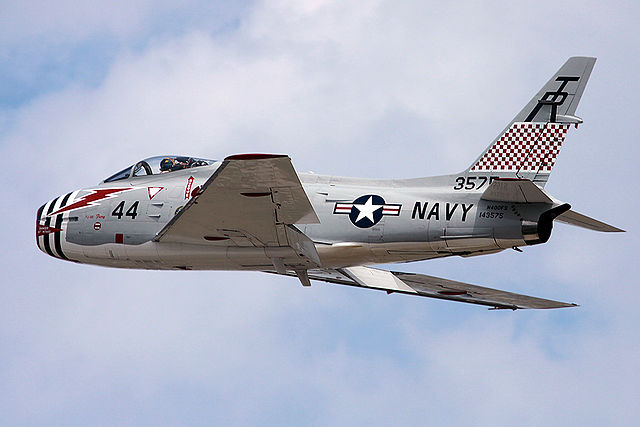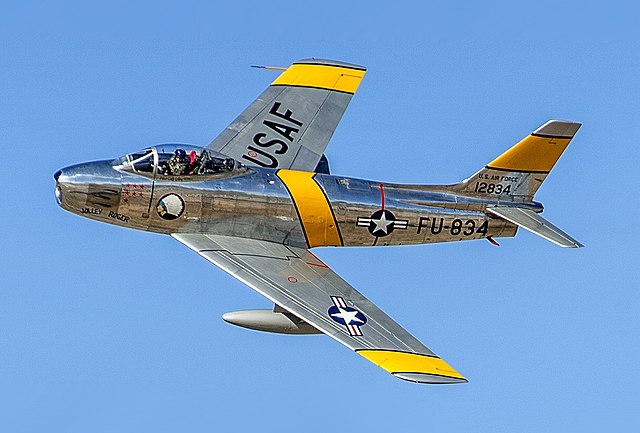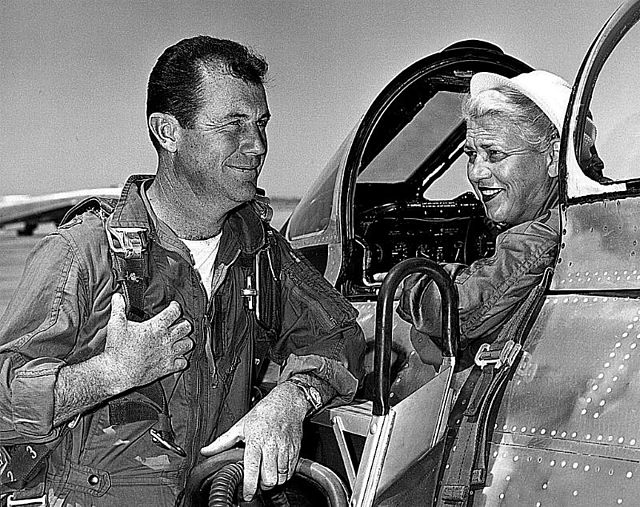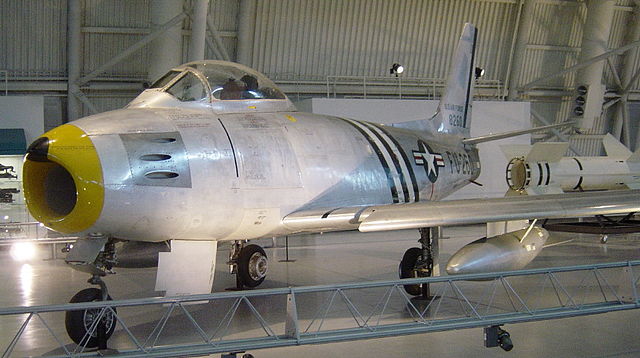The North American FJ-4 Fury is a swept-wing carrier-capable fighter-bomber for the United States Navy and Marine Corps. The final development in a lineage that included the Air Force's F-86 Sabre, the FJ-4 shared its general layout and engine with the earlier FJ-3, but featured an entirely new wing design and was a vastly different design in its final embodiment.
North American FJ-4 Fury
An FJ-4B with six rocket pods
FJ-4F prototype with added rocket engine
Four VA-63 FJ-4Bs in 1958.
North American F-86 Sabre
The North American F-86 Sabre, sometimes called the Sabrejet, is a transonic jet fighter aircraft. Produced by North American Aviation, the Sabre is best known as the United States' first swept-wing fighter that could counter the swept-wing Soviet MiG-15 in high-speed dogfights in the skies of the Korean War (1950–1953), fighting some of the earliest jet-to-jet battles in history. Considered one of the best and most important fighter aircraft in that war, the F-86 is also rated highly in comparison with fighters of other eras. Although it was developed in the late 1940s and was outdated by the end of the 1950s, the Sabre proved versatile and adaptable and continued as a front-line fighter in numerous air forces.
North American F-86 Sabre
Jackie Cochran in the cockpit of the Canadair Sabre with Chuck Yeager
PAF "Falcons" make a world record in 1958 with 16 F-86 sabres
Sabre at NASM in livery of 4th Fighter-Interceptor Wing








